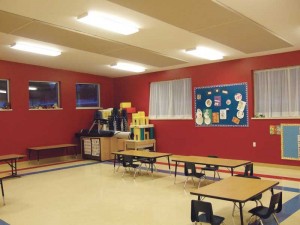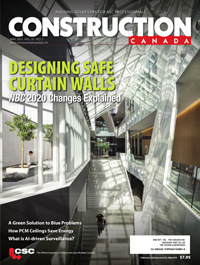Creating worship spaces that sound heavenly

Church complexes can have complicated acoustical needs
It is the main worship space one thinks of when it comes to churches and other houses of worship, but much of what makes a church central to a community are the other roles it plays. These buildings often also house:
- meeting spaces;
- reception halls;
- preschools;
- seniors’ activity centres;
- gymnasiums; and
- other auxiliary spaces.
There are a growing number of large-scale churches with acoustic needs more aligned with large performance venues than traditional houses of worship. In the primary worship space, integrated diffusive elements, as well as acoustic panelling, are incorporated––usually covering the entire floor-to-ceiling surface area of the room’s perimeter.
At Toronto’s 3000-seat Prayer Palace, the main worship space is a wide open, semi-circular space with high ceilings and a flat surface perimeter, which was treated post-construction with 51-mm (2-in.) absorptive panelling.
A representative from the Prayer Palace explained the church was experiencing less than desirable ‘decay’ rates and unwanted reverberation. However, since acoustically treating the facility, the audio is clear, well-rounded, and has a complete range that provides occupants with clarity and great tone.
Acoustical issues sometimes overlooked in these large-scale church complexes are outside the main sanctuary space altogether. Designers should consider the acoustical needs of each area, along with the function of these large church complexes, which can sometimes be quite extensive.
At the Prayer Palace, services are often recorded for broadcast via a fully outfitted production studio. This recording function is not as specialized as one might think––many congregations use amplified music and multi-media presentations, and more churches are getting into audiovisual (A/V) broadcasting and podcasting to connect with their congregations in new ways. One should look for the small production booth as a request in new construction and retrofit worship spaces. These small studios require an ultra-quiet, minimally resonant sound environment with 50 per cent or more of the surface area treated with absorptive material.
In so many worship complexes, the multi-purpose hall is a well-used space, hosting seniors’ group meetings, private functions, and social gatherings. However, vaulted ceilings or hard surfaces can make these rooms extremely noisy, especially for seniors or other congregants with hearing challenges. Absorptive acoustic treatment on the walls and ceiling provide a simple, economical solution that can vastly improve the room’s comfort and functionality.
Many worship complexes include classroom spaces for preschools, Bible study, or adult education. Even if it is not an ‘official’ school space, the U.S. Green Building Council’s (USGBC’s) Leadership in Energy and Environmental Design (LEED) for Schools criteria provides excellent best-practice guidance for educational spaces within a church complex. (For more information, visit www.usgbc.org).

According to this criteria, designers must focus on three objectives. The first is reverberation time––a measurement of sound absorption and how long it takes for sound to decay by 60 decibels (dB). To meet LEED for Schools criteria, core learning spaces can measure between 0.6 and 0.7 seconds, depending on the size of the space. The second design guideline is sound transmission class (STC), measuring how much sound permeates through walls, floors, and ceilings. LEED calls for most classrooms to have an STC rating of 50, up to STC 60 for larger spaces––the higher the number, the better. The third point of guidance covers background noise level, which should not exceed 45 dB from sources such as the HVAC system or elsewhere.
Finally, one should not forget about the front foyer––where the congregation mingles informally before or after services. This is an important part of the building’s social role. An acoustically comfortable space will serve and enhance this function.
Exploring the esthetic options
Esthetically, houses of worship share the same goals as other public spaces––the need to achieve a level of refinement that is consistent with the importance of the space, while at the same time being durable and affordable.
Moulded foam may be what many people think of when they consider acoustic panelling, but because the material is prone to damage, it is not really an option outside of a studio setting. Acoustic-tile drop ceilings may be part of the ‘tool kit’ for classrooms, meeting rooms, and other auxiliary spaces, but additional acoustic treatment can still be required on the walls to achieve optimal effect. Custom wood panelling can be matched with the pews or other millwork in the space. These offer a diffusive surface, and may or may not incorporate an absorptive backing, depending on requirements. Fabric-wrapped panels are a good option for spaces that need acoustic treatment at an affordable cost. Designers should only use acoustically rated fabric to maximize the panelling’s effectiveness. The range of colours and patterns is almost endless.
Conclusion
Worship spaces are changing along with the modern congregations they serve. With a little attention to how people use the various spaces within a church complex, acoustic treatment can enhance the congregation’s worship experience.
Oliver Barkovic is the owner and president of Forward Acoustics Inc., an Ontario-based acoustical consultant and manufacturer of acoustic products. He can be reached via e-mail at info@forwardacoustics.com.







